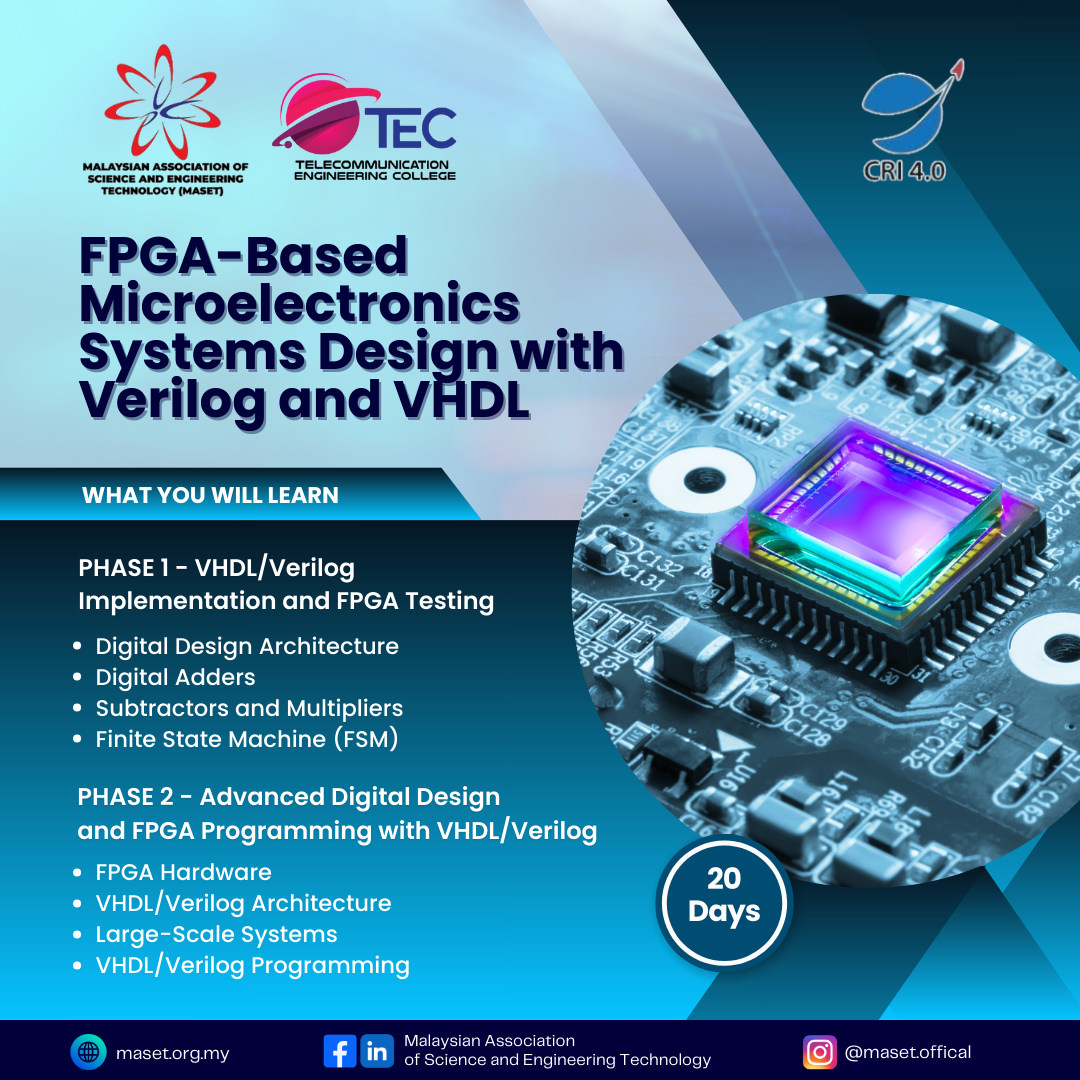Foundation
Malaysia’s rapid growth in the semiconductor and electronics sector has created a rising demand for talent skilled in FPGA-based system design and hardware description languages (HDLs) such as Verilog and VHDL. As industries increasingly adopt digital technologies, the ability to prototype and implement integrated circuit (IC) designs quickly and cost-effectively has become a key competitive advantage. This 20-day intensive course addresses the industry need by equipping participants with both theoretical knowledge and hands-on skills in digital design, IC prototyping, and FPGA systems. Participants will gain experience designing components such as adders, multipliers, finite state machines, and more, using industry-standard tools and methods. These competencies are directly aligned with roles in electronics, embedded systems, and semiconductor design companies.
The course supports national initiatives like the TVET Transformation Agenda and the MyDIGITAL Blueprint, which highlight advanced electronics and chip design as strategic areas for workforce development. It also enables Bumiputera inclusion in high-value technical fields, providing pathways to roles with starting salaries of RM4,000–RM6,000/month and significant growth potential. By developing local expertise in FPGA and HDL, this program helps future-proof Malaysia’s engineering talent, strengthens the E&E ecosystem, and enhances national capabilities in a globally competitive industry.
Down sampling
 High Speed USB
High Speed USB (480 Mb/s)
FPGA-Based Microelectronics Systems Design with Verilog and VHDL is a 20-day intensive program designed to provide participants with practical skills and foundational knowledge in FPGA-based digital system design. The course blends theory and hands-on experience in digital design and IC prototyping using Verilog and VHDL. Participants will gain the ability to write and implement HDL code in line with industry standards. Core topics include the design of adders, multipliers, finite state machines (FSM), and testing methodologies. This course is well-suited for those aiming to build or strengthen their skills in FPGA system development.
FPGA-Based Microelectronics Systems Design
Requirement Analysis
Understand the application domain, target specifications, and constraints.
System Architecture
Define data paths, control logic, memory usage, and IP integration strategy.
HDL Modeling
Develop hardware modules using VHDL or Verilog for synthesis on FPGA.
Simulation & Verification
Simulate the RTL to validate functional behavior before synthesis.
Synthesis
Generate netlist from HDL code using FPGA vendor tools (e.g., Vivado).
Implementation
Run placement, routing, and optimization for timing, area, and power.
Bitstream Generation
Create the binary file to program the FPGA with the designed logic.
FPGA Programming
Upload the bitstream to the physical FPGA device for prototyping/testing.
Testing & Debugging
Verify functionality in real hardware using tools like ILA or ChipScope.
FPGA-Based

